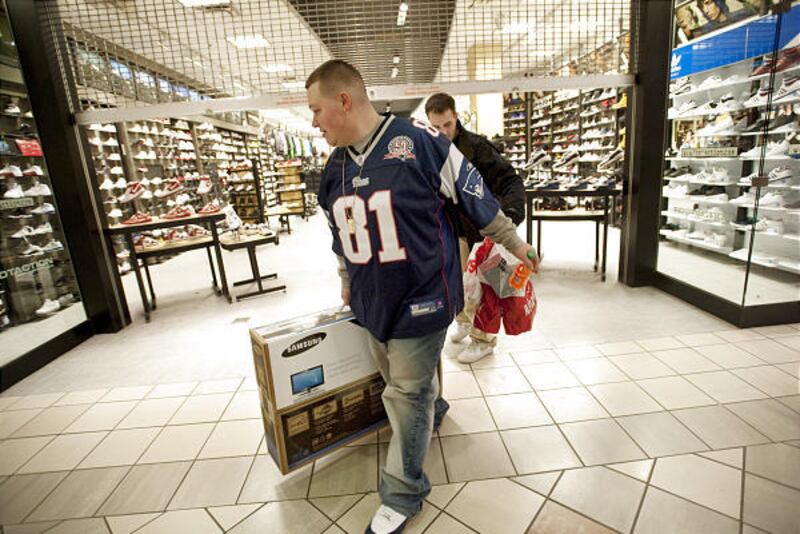NEW YORK — Early reports from stores on the holiday shopping season looked good. But it turns out retail sales actually fell in December, leaving economists scratching their heads about the state of the recovery.
Sales dropped 0.3 percent from the month before, mostly because people spent less on cars and appliances, the government said Thursday. For the year, they fell 6.2 percent.
Economists said the monthly decline could just be a blip, and suggested looking at the past two months together, which would show spending rising modestly. But with unemployment high and credit tight, the report shows the recovery remains tentative.
"I wasn't expecting this. It's a bit of a puzzle," said Scott Hoyt, senior director of consumer economics at Moody's Economy.com. "Consumer spending is growing very weakly, but the key thing is that it's growing."
Retail sales have now fallen two years in a row. The decline in 2008 was much smaller, 0.5 percent. They are the only two years sales have fallen since the government started keeping records in 1992.
For December, there was a small 0.8 percent decline in auto sales, even as automakers report they sold more cars and trucks. That could be because fewer luxury cars were sold and automakers offered more incentives for buyers, said Jeff Schuster, executive director of automotive forecasting for J.D. Power.
The next few months still look scary for retailers. Stores are finding shoppers have little reason to buy now that the holidays have passed. January sales are off to a weaker-than-expected start, according to the International Council of Shopping Centers.
As the nation grapples with 10 percent unemployment, many Americans are basing their purchases on immediate need and are reluctant or unable to borrow money to remodel homes or buy cars.
Outstanding credit card debt, auto loans and other consumer borrowing fell by the largest amount on record in November, the 10th straight month of decline, the Federal Reserve said last week.
Spending on autos and housing have also helped to spur robust rebounds in the past, but those two areas show no signs of a major turnaround. Tight credit will also limit spending even if people start to feel more secure about their jobs, said Michael P. Niemira, chief economist at the International Council of Shopping Centers.
A new report on the labor market also gave a cloudy outlook. The Labor Department said the number of newly laid-off workers requesting unemployment benefits rose by 11,000 for the week, to a seasonally adjusted 444,000. Economists expected an increase of only 3,000.

